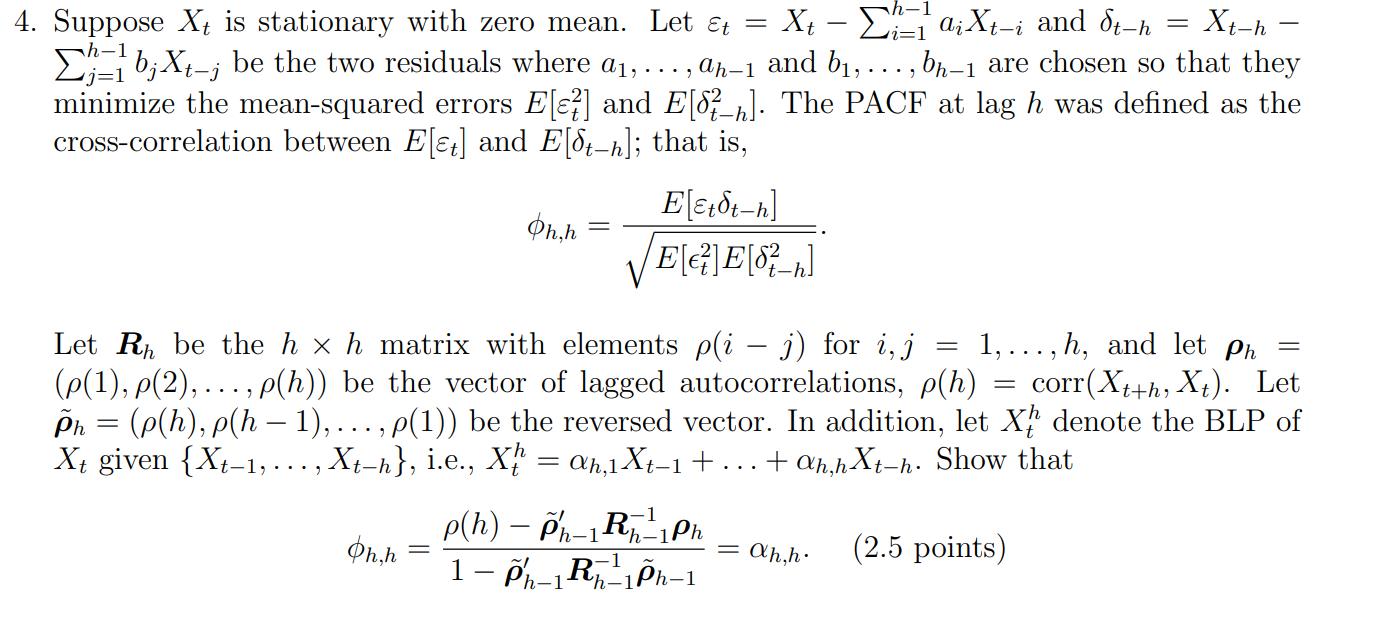Home /
Expert Answers /
Statistics and Probability /
suppose-x-t-is-stationary-with-zero-mean-let-epsi-t-x-t-sum-i-1-h-1-a-i-x-t-i-and-pa618
(Solved): Suppose x_(t) is stationary with zero mean. Let \epsi _(t)=x_(t)-\sum_(i=1)^(h-1) a_(i)x_(t-i) and ...
Suppose
x_(t)is stationary with zero mean. Let
\epsi _(t)=x_(t)-\sum_(i=1)^(h-1) a_(i)x_(t-i)and
\delta _(t-h)=x_(t-h)-
\sum_(j=1)^(h-1) b_(j)x_(t-j)be the two residuals where
a_(1),dots,a_(h-1)and
b_(1),dots,b_(h-1)are chosen so that they minimize the mean-squared errors
E[\epsi _(t)^(2)]and
E[\delta _(t-h)^(2)]. The PACF at lag
hwas defined as the cross-correlation between
E[\epsi _(t)]and
E[\delta _(t-h)]; that is,
\phi _(h,h)=(E[\epsi _(t)\delta _(t-h)])/(\sqrt(E[\epsi lon_(t)^(2)]E[\delta _(t-h)^(2)]))Let
R_(h)be the
h\times hmatrix with elements
\rho (i-j)for
i,j=1,dots,h, and let
\rho _(h)=
(\rho (1),\rho (2),dots,\rho (h))be the vector of lagged autocorrelations,
\rho (h)=corr(x_(t+h),x_(t)). Let
tilde(\rho )_(h)=(\rho (h),\rho (h-1),dots,\rho (1))be the reversed vector. In addition, let
x_(t)^(h)denote the BLP of
x_(t)given
{x_(t-1),dots,x_(t-h)}, i.e.,
x_(t)^(h)=\alpha _(h,1)x_(t-1)+dots+\alpha _(h,h)x_(t-h). Show that
\phi _(h,h)=(\rho (h)-tilde(\rho )_(h-1)^(')R_(h-1)^(-1)\rho _(h))/(1-tilde(\rho )_(h-1)^(')R_(h-1)^(-1)tilde(\rho )_(h-1))=\alpha _(h,h)